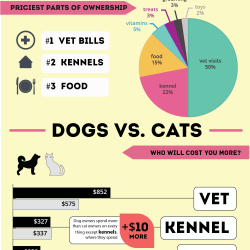the ultimate guide to how does term life insurance work

Preventive care is covered If you seek care when you're ill or injured, you'll generally need to pay something out of pocket until you reach your annual deductible. Some services might be covered at no expense to you, including annual examinations, age-appropriate screenings, other types of preventive care, Look at this website and preventive medications as mandated by the Affordable Care Act.
Know the expense of care Health insurance coverage is less complicated when you understand the various costs that belong to your health insurance. Informing yourself about how health insurance works is a fundamental part of being a wise health care consumer.
Sales Concerns and Additional Strategy Details: Calls might or may not be addressed inside the United States. Monday Friday: 8 a. m. 8 p. m. CTSaturday: 8 a. m. 6 p. m. CTSunday: 10 a. m. 2 p. m. CT Customer Service: Calls may or may not be responded to inside the United States.
m. 8 p. m. CTSaturday: 8 a. m. 5 p. m. CTSunday: Closed Currently a member?Call the Customer Service number on the back of your member ID card. New to Medicare or Need Assist Looking For a Plan? Call us at $11-877-213-1821 TTY 711 We're open in between 8 a. m.
m., regional time, 7 days a week. If you're calling from April 1 through September 30, alternate innovations (for example, voicemail) will be utilized on the weekends and holidays.
The Greatest Guide To How Much Does It Cost To Fill A Cavity With Insurance
Lots of health insurance require both a deductible and coinsurance. Comprehending the difference between deductible and coinsurance is a critical part of understanding what you'll owe when you utilize your medical insurance. Deductible and coinsurance are kinds of health insurance cost-sharing; you pay part of the expense of your healthcare, and your health insurance pays part of the cost of your care.
Ariel Skelley/ Getty Images A deductible is a fixed amount you pay each year before your health insurance coverage kicks in fully (when it comes to Medicare Part Afor inpatient carethe deductible uses to "benefit durations" rather than the year). When you've paid your deductible, your health insurance begins to choose up its share of your health care bills.
You have a $2,000 deductible. You get the flu in January and see your doctor. The doctor's expense is $200, Continue reading after it's been adjusted by your insurance provider to match the negotiated rate they have with your medical professional. You are responsible for the whole bill since you have not paid your deductible yet this year (for this example, we're assuming that your strategy doesn't have a copay for workplace visits, however instead, counts the charges towards your deductible).

[Note that your physician likely billed more than $200. However since that's the negotiated rate your insurance company has with your physician, you only have to pay $200 which's all that will be counted towards your deductible; the rest simply gets crossed out by the doctor's workplace as part of their agreement with your insurer.] In March, you fall and break your arm.
You pay $1,800 of that costs prior to you have actually satisfied your annual deductible of $2,000 (the $200 from the treatment for the influenza, plus $1,800 of the expense of the broken arm). Now, your medical insurance starts and assists you pay the rest of the costs. You'll still have to pay a few of the remainder of the costs, thanks to coinsurance, which is talked about in more information listed below.
The Only Guide to How To Get A jaylynn gates Breast Pump Through Insurance
The bill is $500. Given that you have actually already fulfilled your deductible for the year, you do not need to pay any more towards your deductible. Your medical insurance pays its complete share of this bill, based on whatever coinsurance divided your strategy has (for example, an 80/20 coinsurance split would imply you 'd pay 20% of the costs and your insurance company would pay 80%, presuming you haven't yet met your strategy's out-of-pocket maximum).
This will continue up until you've fulfilled your maximum out-of-pocket for the year. Coinsurance is another kind of cost-sharing where you spend for part of the expense of your care, and your medical insurance pays for part of the cost of your care. However with coinsurance, you pay a portion of the bill, instead of a set quantity.
Let's say you're required to pay 30% coinsurance for prescription medications. You fill a prescription for a drug that costs $100 (after your insurer's negotiated with the drug store is applied). You pay $30 of that bill; your health insurance coverage pays $70. Because coinsurance is a portion of the cost of your care, if your care is actually costly, you pay a lot.
However the Affordable Care Act reformed our insurance coverage system as of 2014, imposing new out-of-pocket caps on almost all plans. Coinsurance costs of that magnitude are no longer permitted unless you have a grandfathered or grandmothered health plan. All other strategies need to top each individual's overall out-of-pocket costs (consisting of deductibles, copays, and coinsurance) for in-network necessary health benefits at no more than whatever the specific out-of-pocket maximum is for that year.
For 2021, it will be $8,550. But this includes all cost-sharing for necessary health gain from in-network companies, including your deductible and copaysso $10,000 in coinsurance for a $40,000 medical facility bill is no longer permitted on any plans that aren't grandfathered or grandmothered. In time, however, the permitted out-of-pocket limits could reach that level again if the guidelines aren't modified by lawmakers (for viewpoint, the out-of-pocket limit in 2014 was $6,350, so it's increased by almost 35% from 2014 to 2021).
The 5-Minute Rule for How Much Does Gap Insurance Cost

As soon as you have actually satisfied your deductible for the year, you don't owe any more deductible payments until next year (or, in the case of Medicare Part A, till your next advantage period) – what is the difference between term and whole life insurance. You may still have to pay other types of cost-sharing like copayments or coinsurance, but your deductible is done for the year.
The only time coinsurance stops is when you reach your medical insurance policy's out-of-pocket maximum. This is uncommon and just occurs when you have really high health care costs. Your deductible is a set quantity, however your coinsurance is a variable amount. If you have a $1,000 deductible, it's still $1,000 no matter how huge the costs is.
Although you'll understand what your coinsurance percentage rate is when you register in a health plan, you won't know just how much cash you in fact owe for any specific service till you get that service and the bill. Because your coinsurance is a variable amounta percentage of the billthe greater the bill is, the more you pay in coinsurance.
For example, if you have a $20,000 surgery bill, your 30% coinsurance will be a massive $6,000. However again, as long as your plan isn't grandmothered or grandfathered, your total out-of-pocket charges can't exceed $8,150 in 2020, as long as you stay in-network and follow your insurance company's rules for things like recommendations and prior permission.
Deductible and coinsurance decrease the quantity your health insurance pays towards your care by making you get part of the tab. This advantages your health plan since they pay less, but likewise since you're less most likely to get unneeded healthcare services if you have to pay a few of your own cash toward the expense.





Ingen kommentarer endnu